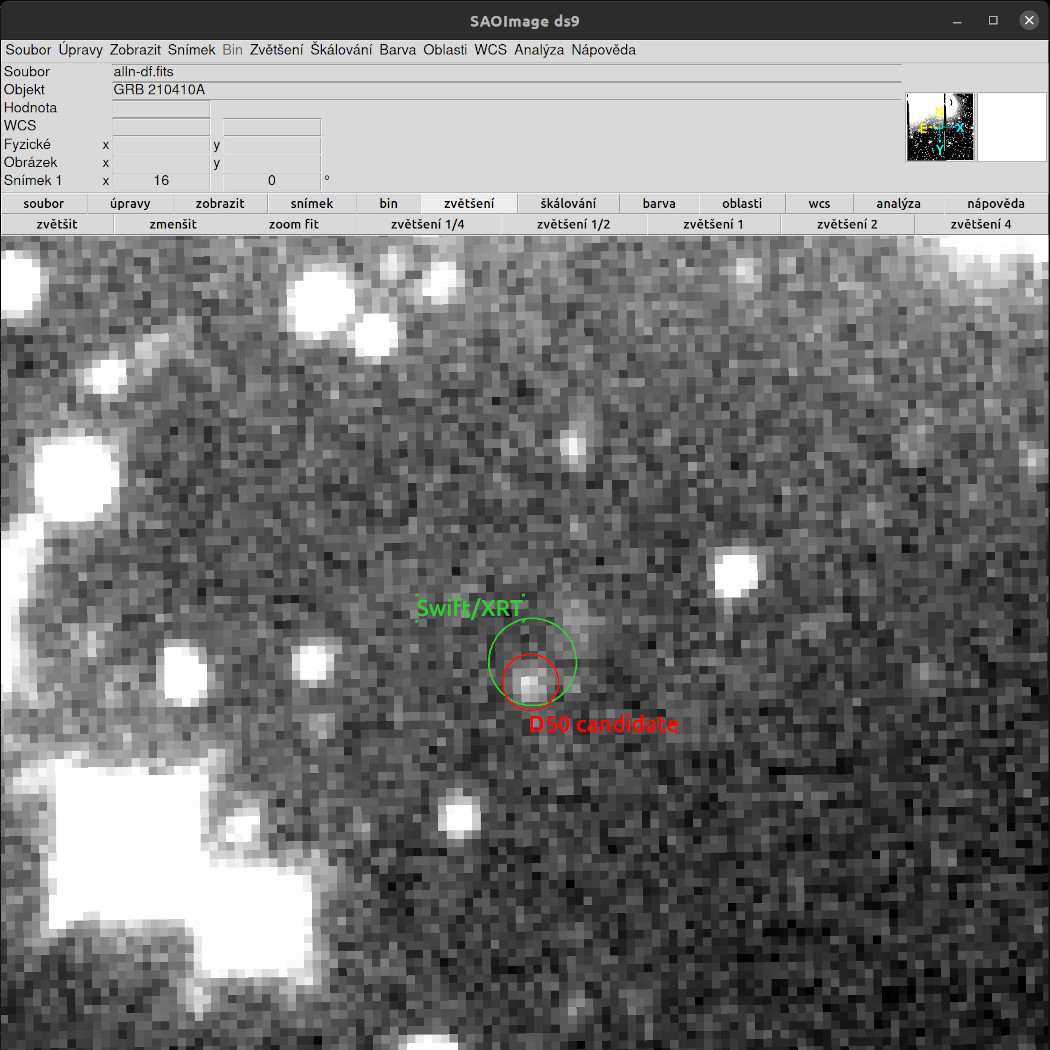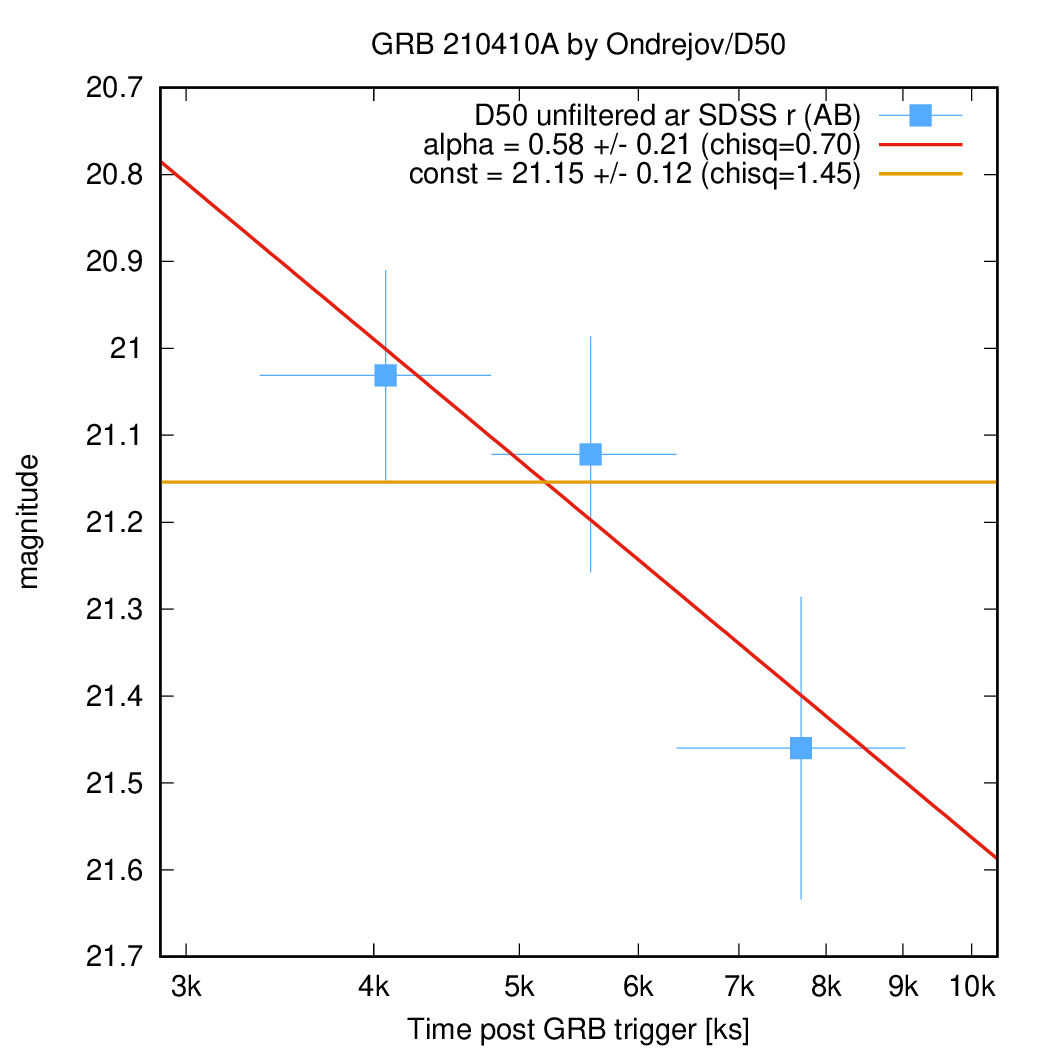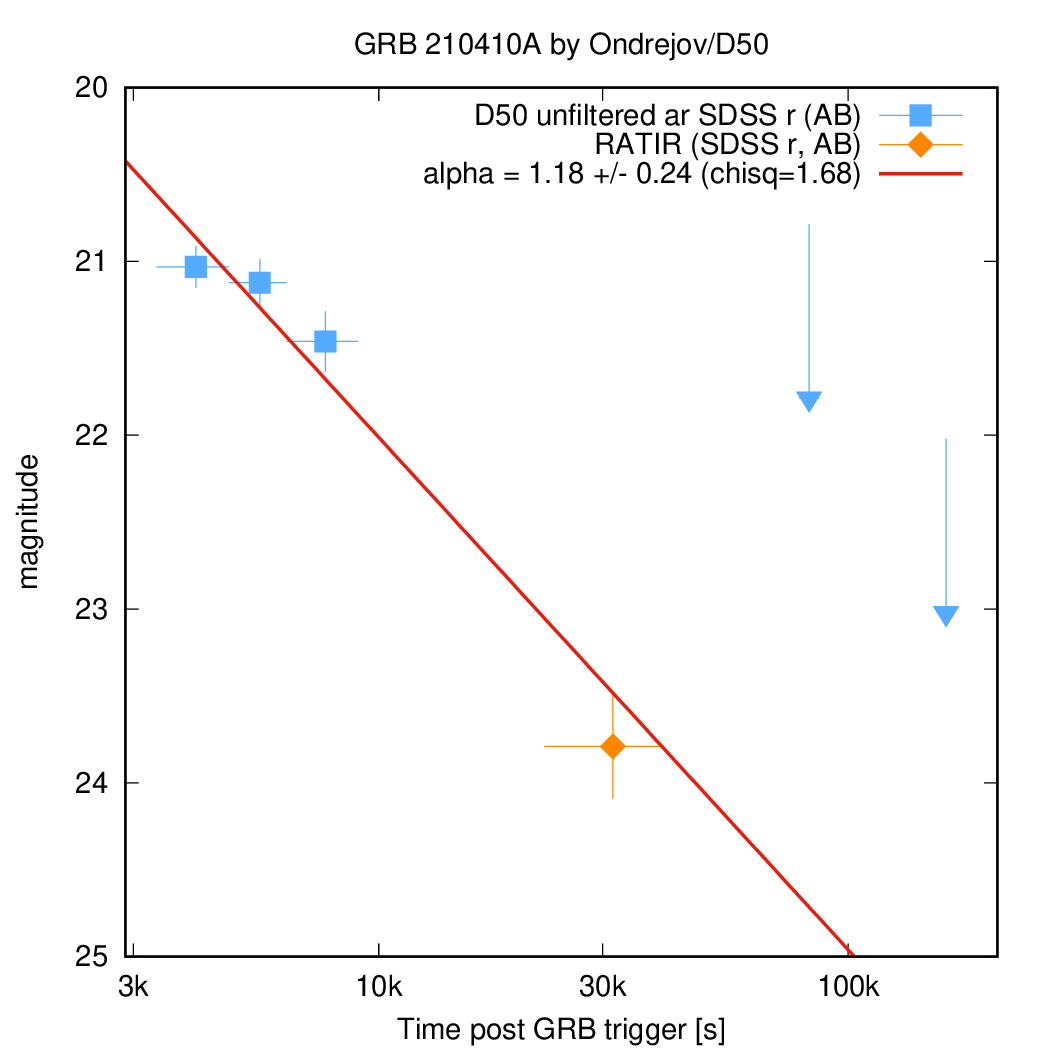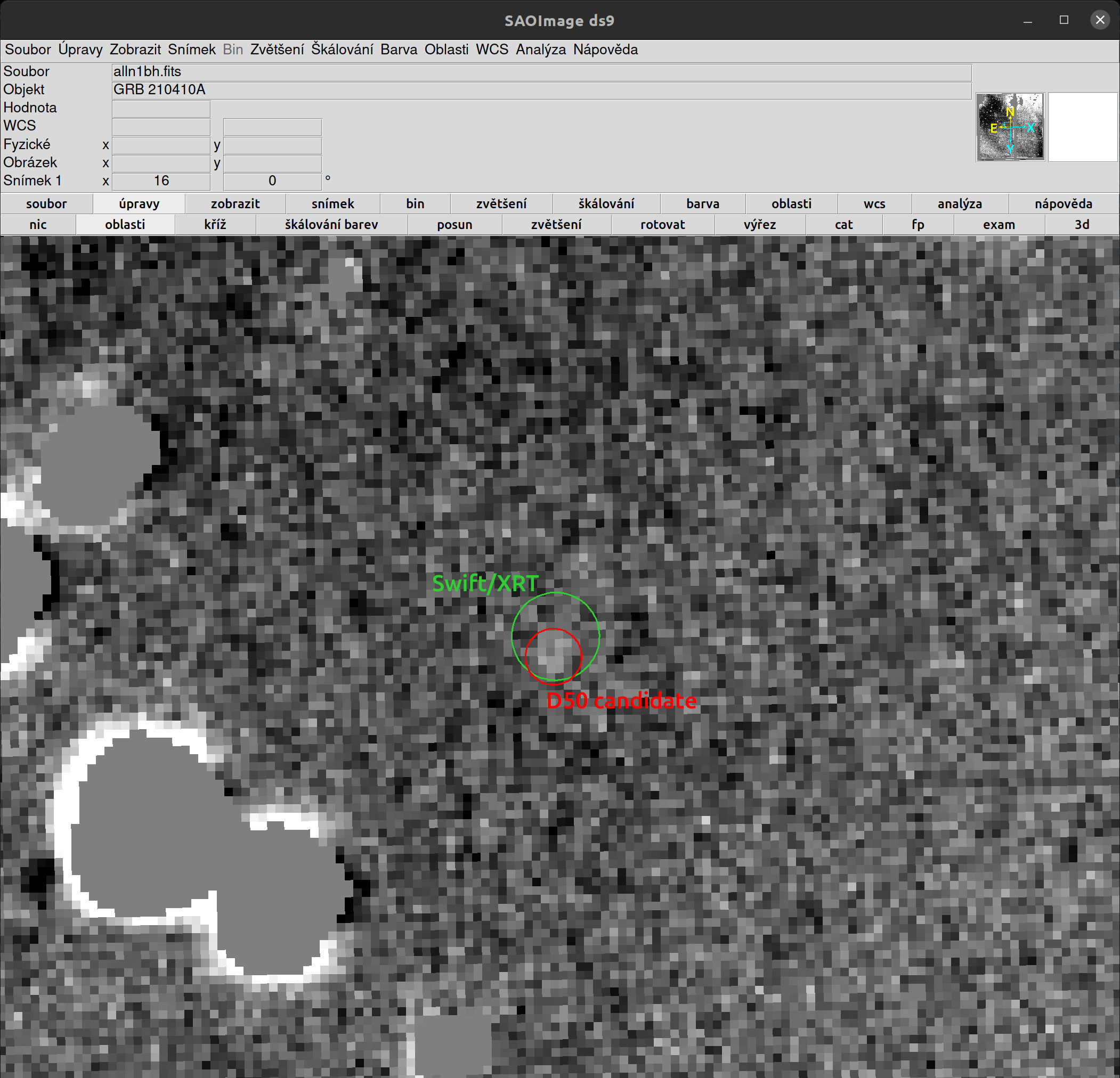

I was woken up at 3 am by my watch, which vibrated on my hand and at its display Jan wrote: "Bart observes a GRB". The first thought was the same as would be of anyone else: "screw it, lets sleep and have a look in the morning". Thirty seconds later I got up, sat to the computer and started processing the images. I am too curious, it seems. :)
GRB 210410A was localized by Fermi/GBM at 00:53:16 UT (Fermi team, GCN 29777) and as it turned out later, it was detected also by Fermi/LAT (Arimoto at al., GCN 29781).
The observation performed by BART/SBT, which pointed promptly within 64 s after the trigger, turned out to be useless, because the distributed coordinates were off by more than what would fit to our FOV of 3.5 deg and SBT does not do mosaicing.
After the distribution of Swift/XRT position (Melandri et al., GCN 29778) we pointed the D50 in a manual way, starting some 56 minutes after the initial GBM trigger. There are bright stars in the vicinity of the GRB position, so the images look bad, but inside the XRT errorbox we found an optical source at
The source does seem to be fading, but as it is faint, it is difficult to decide of the reality of its decay. The chi-square values of decay vs. constant fit are about similarly off unity to give much clue. Only reobservation of the position may give a definitive answer.
We issued a circular anyway: GRB210410A: Candidate optical afterglow by Ondrejov D50.


We resolved the doubt when the RATIR GCN (Butler et al. GCNC 29784) was published. After a short communication with Nat Butler, we concluded that we are observing the same decaying object and issued an update: GRB210410A: Joint inspection of RATIR and D50 data. What we discovered is therefore indeed the optical afterglow of GRB 210410A.


The following night we did one more visit to the GRB position, accumulating 62 x 120s of unfiltered exposures. The weather conditions were not good, resulting in a 3-sigma detection limit of (only) ~21.73. We used this image as a template to be subtracted from the previous night image and despite its relatively low quality, the object was confirmed to have vanished.
The third night we had an opportunity to observe the location with the 2m telescope, but the position was available towards the end of the night and the weather got bad by midnight, so there is only 30 minutes of exposure in r', not detecting anything. The detection limit is r'>23.05. (But hey, not detecting anything is an expected thing 2 days after trigger in case the object was the optical afterglow, so the only thing I would like to have is a somewhat deeper image, with a limit better than, say, the detection of RATIR. [Not that I complain!])
